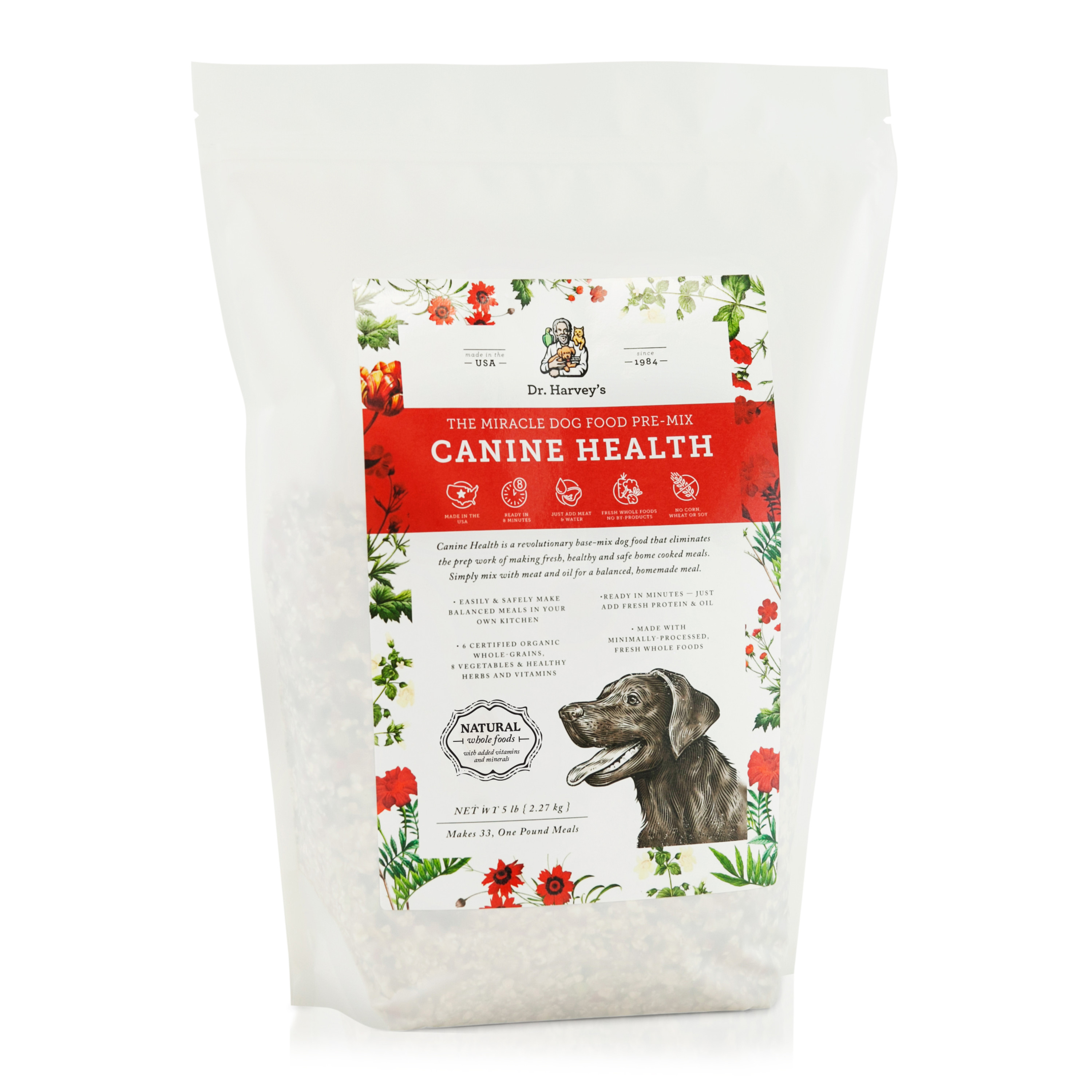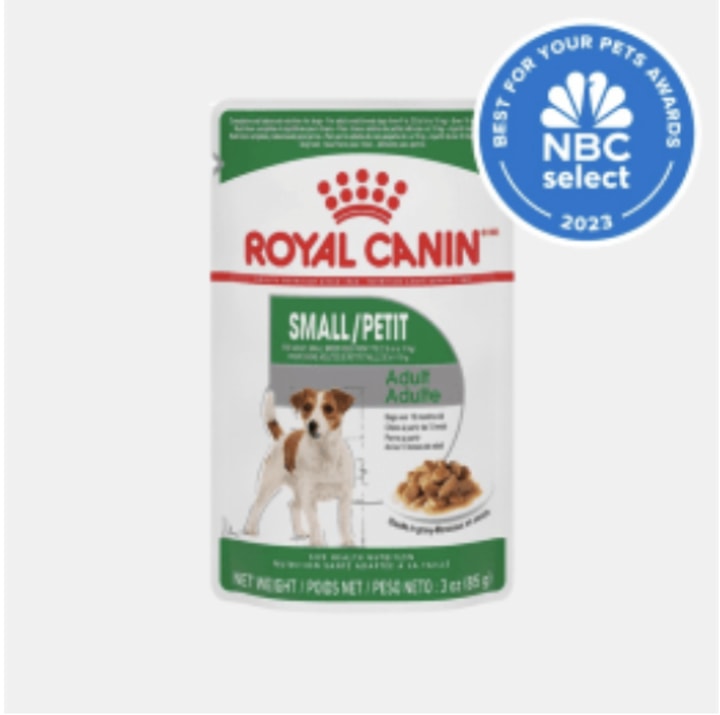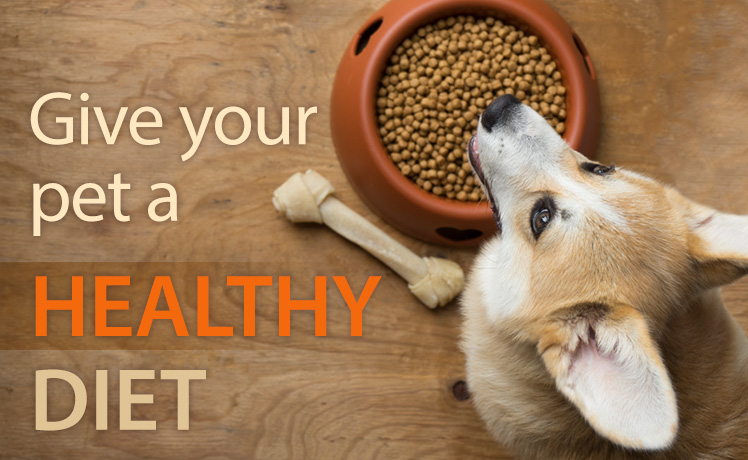As an Amazon Associate, I earn from qualifying purchases
The healthiest dog food for your pet is one that contains high-quality, natural ingredients and meets their specific nutritional needs. Always consult your veterinarian for personalized recommendations.
Choosing the right dog food is crucial for your pet’s health and well-being. High-quality dog food supports their immune system, promotes a healthy coat, and enhances overall vitality. Look for options with real meat as the primary ingredient, supplemented with vegetables and whole grains.
Avoid artificial preservatives, colors, and fillers. Grain-free options can be beneficial for dogs with allergies. Be mindful of your pet’s age, size, and activity level when selecting food. Regularly monitor their health and adjust their diet as needed. Prioritizing their nutrition ensures a happier, healthier life for your furry friend.

Introduction To Healthy Dog Food
Choosing the healthiest dog food ensures your pet’s well-being. A balanced diet helps keep your dog active and happy. But what makes dog food healthy?
Why It Matters
Healthy food gives your dog the nutrients they need. It helps them grow strong and stay energetic. Without proper nutrients, dogs can become sick or weak. Healthy food can prevent many common health issues.
Common Misconceptions
Many believe expensive food is always better. This is not true. Price does not always mean quality. Another myth is that grain-free food is best. Some dogs need grains for a balanced diet.
Here are some common misconceptions:
- All-natural food is always the healthiest.
- Homemade diets are better than commercial food.
- Dogs should eat only meat.
Always check the ingredients list. Look for real meat, vegetables, and whole grains. Avoid foods with fillers and artificial preservatives. Your vet can help you choose the best food for your dog.
Nutritional Needs Of Dogs
Dogs need balanced diets for good health. Their nutritional needs differ from humans. Understanding these needs ensures your pet gets the best food.
Essential Nutrients
Dogs need six main types of nutrients:
- Proteins: Vital for muscle growth and repair.
- Fats: Provide energy and support cell function.
- Carbohydrates: Supply energy and aid digestion.
- Vitamins: Necessary for metabolic functions.
- Minerals: Important for bone health and enzyme function.
- Water: Essential for all bodily processes.
Each nutrient plays a specific role. Missing any can lead to health issues.
Age-specific Requirements
Dogs’ nutritional needs change with age. Puppies, adults, and seniors require different nutrients.
| Age Group | Nutritional Needs |
|---|---|
| Puppies | High protein and fats for growth and energy. |
| Adults | Balanced nutrients to maintain health and activity. |
| Seniors | Lower calories, higher fiber for digestive health. |
Feeding the right food for each life stage ensures your dog thrives.
Types Of Dog Food
Choosing the right dog food for your pet can be overwhelming. There are many options available, each with its own benefits. In this section, we will explore the different types of dog food. This will help you understand which might be the healthiest for your furry friend.
Dry Food
Dry food, also known as kibble, is the most popular choice. It is convenient, easy to store, and often more affordable. Dry food helps keep your dog’s teeth clean due to its crunchy texture.
| Advantages | Disadvantages |
|---|---|
|
|
Wet Food
Wet food comes in cans or pouches and is rich in moisture. It is often more appealing to dogs due to its taste and texture. Wet food is a great option for dogs that need extra hydration.
| Advantages | Disadvantages |
|---|---|
|
|
Raw Food
Raw food, also known as BARF (Biologically Appropriate Raw Food), includes uncooked meat, bones, fruits, and vegetables. Many believe it is the most natural diet for dogs. Raw food can help improve coat health and energy levels.
| Advantages | Disadvantages |
|---|---|
|
|
Ingredients To Look For
Choosing the healthiest dog food for your pet can be challenging. Understanding the key ingredients is crucial. This section will guide you through essential ingredients to ensure your furry friend gets the best nutrition.
High-quality Proteins
Proteins are the building blocks of your dog’s diet. High-quality proteins support muscle growth and repair. Look for ingredients like:
- Chicken
- Beef
- Turkey
- Fish
These proteins should be the primary ingredient in dog food. Avoid foods with fillers like corn or soy protein.
Healthy Fats
Healthy fats provide energy and support skin and coat health. Essential fatty acids are crucial. Key sources include:
- Fish oil
- Flaxseed oil
- Chicken fat
These fats also aid in nutrient absorption. Ensure your dog’s food contains these healthy fats.
Beneficial Carbohydrates
Carbohydrates provide energy and fiber. Choose dog foods with wholesome grains and vegetables. Beneficial sources include:
- Brown rice
- Sweet potatoes
- Oats
- Peas
Avoid foods with excessive fillers like white rice or corn. These can lead to weight gain and health issues.
| Ingredient | Benefit |
|---|---|
| Chicken | High-quality protein |
| Fish oil | Healthy fat for coat health |
| Sweet potatoes | Beneficial carbohydrate |
Ingredients To Avoid
Choosing the healthiest dog food involves checking the ingredients. Some ingredients can harm your pet’s health. Knowing what to avoid can help you make better choices.
Artificial Additives
Artificial additives are chemicals added to dog food. These include artificial colors, flavors, and preservatives.
- Artificial Colors: These dyes can cause allergies and hyperactivity.
- Artificial Flavors: These can lead to digestive issues and poor nutrition.
- Preservatives: Chemicals like BHA, BHT, and ethoxyquin can be toxic.
Fillers
Fillers are ingredients that add bulk but have little nutritional value. They often include:
- Corn: Hard for dogs to digest and can cause allergies.
- Soy: Often used as a cheap protein but can lead to allergies.
- Wheat: Common allergen that can cause skin and digestive issues.
Common Allergens
Some ingredients are common allergens for dogs. These can cause symptoms like itching, stomach upset, and ear infections.
| Allergen | Possible Issues |
|---|---|
| Beef | Can cause skin irritation and digestive problems. |
| Dairy | May lead to lactose intolerance and diarrhea. |
| Chicken | Can trigger allergies in some dogs. |
By avoiding these harmful ingredients, you can ensure a healthier diet for your dog.

Special Dietary Needs
Choosing the healthiest dog food for your pet can be challenging. Each dog has unique dietary needs. These needs can depend on several factors. Let’s explore some of these special dietary needs.
Allergies And Sensitivities
Many dogs suffer from allergies and food sensitivities. Common allergens include beef, chicken, and dairy. Symptoms include itching, vomiting, and diarrhea.
Dogs with food allergies need specific diets. Look for limited ingredient diets. These diets usually contain a single protein source. They also have a single carbohydrate source.
Here is a table to help you choose:
| Ingredient | Allergen-Free Alternative |
|---|---|
| Beef | Lamb or Fish |
| Chicken | Duck or Turkey |
| Dairy | Plant-Based Options |
Weight Management
Maintaining a healthy weight is crucial for dogs. Obesity can lead to health issues. These include diabetes and joint problems.
Choose foods labeled for weight management. These foods are low in calories but rich in nutrients. They often contain high fiber. Fiber helps your dog feel full longer.
- Look for high protein content.
- Avoid foods with fillers.
- Choose low-fat options.
Medical Conditions
Some dogs have specific medical conditions. These require special diets. Conditions include diabetes, kidney disease, and heart disease.
For dogs with diabetes, choose high-fiber, low-sugar foods. This helps regulate blood sugar levels.
Dogs with kidney disease need low-protein, low-phosphorus diets. This reduces the workload on their kidneys.
For heart disease, look for low-sodium foods. This helps manage blood pressure.
Consult your vet for the best options. They can recommend specific brands and formulations.
Reading Dog Food Labels
Choosing the healthiest dog food involves reading the food labels carefully. Labels give essential information about what’s inside the food. Knowing how to read these labels can help you make better choices for your pet’s health.
Key Information
Dog food labels have key information you need to know. These include:
- Ingredients list
- Nutritional information
- Feeding guidelines
Understanding each part helps you pick the right food.
Decoding Ingredients List
The ingredients list is crucial for knowing what’s in your dog’s food. Ingredients are listed by weight. The first few ingredients are the most important.
Here is a simple way to read the list:
| Ingredient | What It Means |
|---|---|
| Meat | High-quality protein source |
| Meat meal | Concentrated protein, less moisture |
| Grains | Source of carbs and fiber |
| By-products | Parts not usually eaten by humans |
Choose foods with high-quality meats and avoid fillers. Look for specific meats like “chicken” instead of “meat”. Avoid foods with lots of artificial preservatives and colors.
By understanding dog food labels, you ensure your pet eats the best food.

Expert Recommendations
Choosing the healthiest dog food for your pet can be overwhelming. There are so many choices, and you want the best for your furry friend. That’s why expert recommendations are crucial. Experts like veterinarians and pet nutritionists can guide you. They help you make informed decisions about your dog’s diet.
Veterinarian Tips
Veterinarians know your dog’s health needs best. Here are some top tips from vets:
- Balance: Ensure the food has the right balance of nutrients.
- Ingredients: Look for whole ingredients like meat, veggies, and grains.
- Avoid Fillers: Skip foods with fillers like corn and soy.
- Check Labels: Always read the labels for nutritional information.
Top-rated Brands
Experts often recommend specific brands. These brands are known for their quality and nutrition. Here are some top-rated brands:
| Brand | Key Features |
|---|---|
| Royal Canin | Customized nutrition based on breed, size, and age. |
| Hill’s Science Diet | Formulated with natural ingredients and clinically proven antioxidants. |
| Orijen | High protein content and made with fresh regional ingredients. |
| Blue Buffalo | Includes real meat, fruit, and vegetables. |
Choosing the right dog food can be easy. With expert advice, you can ensure your dog stays healthy and happy.
Homemade Dog Food
Choosing the right dog food is crucial for your pet’s health. Many pet owners are turning to homemade dog food for its numerous benefits. Making dog food at home ensures you control the ingredients and tailor the diet to your dog’s needs.
Pros And Cons
Homemade dog food has several advantages and disadvantages. Here are the main points to consider:
| Pros | Cons |
|---|---|
| Control over ingredients | Time-consuming |
| Tailored to your dog’s needs | Requires nutritional knowledge |
| Fewer preservatives | Can be expensive |
| Potential for higher quality | Storage challenges |
Basic Recipes
Homemade dog food recipes can be simple and nutritious. Here are a few basic recipes to get you started:
- Chicken and Rice:
- 1 cup cooked chicken
- 1/2 cup cooked rice
- 1/2 cup mixed vegetables
- 1 teaspoon fish oil
- Beef and Sweet Potato:
- 1 cup cooked ground beef
- 1/2 cup mashed sweet potatoes
- 1/2 cup green beans
- 1 teaspoon olive oil
Always consult your vet before changing your dog’s diet. Balance is key to ensuring your pet gets all necessary nutrients.
Transitioning To A New Food
Transitioning to a new dog food is crucial for your pet’s health. A gradual switch helps prevent digestive issues. Follow a structured plan to make the process smooth.
Step-by-step Guide
Use this step-by-step guide to transition your dog’s food:
- Days 1-2: Mix 25% new food with 75% old food.
- Days 3-4: Mix 50% new food with 50% old food.
- Days 5-6: Mix 75% new food with 25% old food.
- Day 7: Switch to 100% new food.
Follow this guide to avoid upsetting your dog’s stomach. Adjust the timeline if needed.
Monitoring Your Dog
Watch your dog closely during the food transition:
- Check for signs of digestive upset.
- Monitor stool consistency and frequency.
- Note any changes in energy levels.
- Observe your dog’s appetite.
If you notice any issues, slow down the transition process. Consult your vet if problems persist.
| Signs to Monitor | What to Do |
|---|---|
| Diarrhea | Slow down the transition, consult your vet. |
| Vomiting | Pause the new food, seek veterinary advice. |
| Lethargy | Monitor closely, consult your vet if it continues. |
| Loss of Appetite | Slow down the transition, consult your vet. |
Transitioning to a new food is a gradual process. Pay attention to your dog’s reactions. Adjust as needed for a smooth switch.
Frequently Asked Questions
What Is The Healthiest Dog Food?
The healthiest dog food is balanced, containing high-quality protein, essential vitamins, and minerals. Look for whole ingredients and avoid artificial additives.
How Do I Choose The Best Dog Food?
Choose the best dog food by checking the ingredient list. Look for whole foods, high protein content, and no artificial fillers or preservatives.
Is Grain-free Dog Food Better?
Grain-free dog food is not always better. Some dogs benefit from grains. Always consult your vet to determine the best option.
What Ingredients Should I Avoid In Dog Food?
Avoid dog food with artificial colors, flavors, and preservatives. Also, steer clear of fillers like corn, soy, and by-products.
Conclusion
Choosing the healthiest dog food ensures your pet’s well-being and happiness. Always read labels and consult your vet. Opt for high-quality ingredients and avoid fillers. Your dog’s diet directly impacts their energy, health, and longevity. Prioritize their nutrition to give them the best life possible.
As an Amazon Associate, I earn from qualifying purchases

